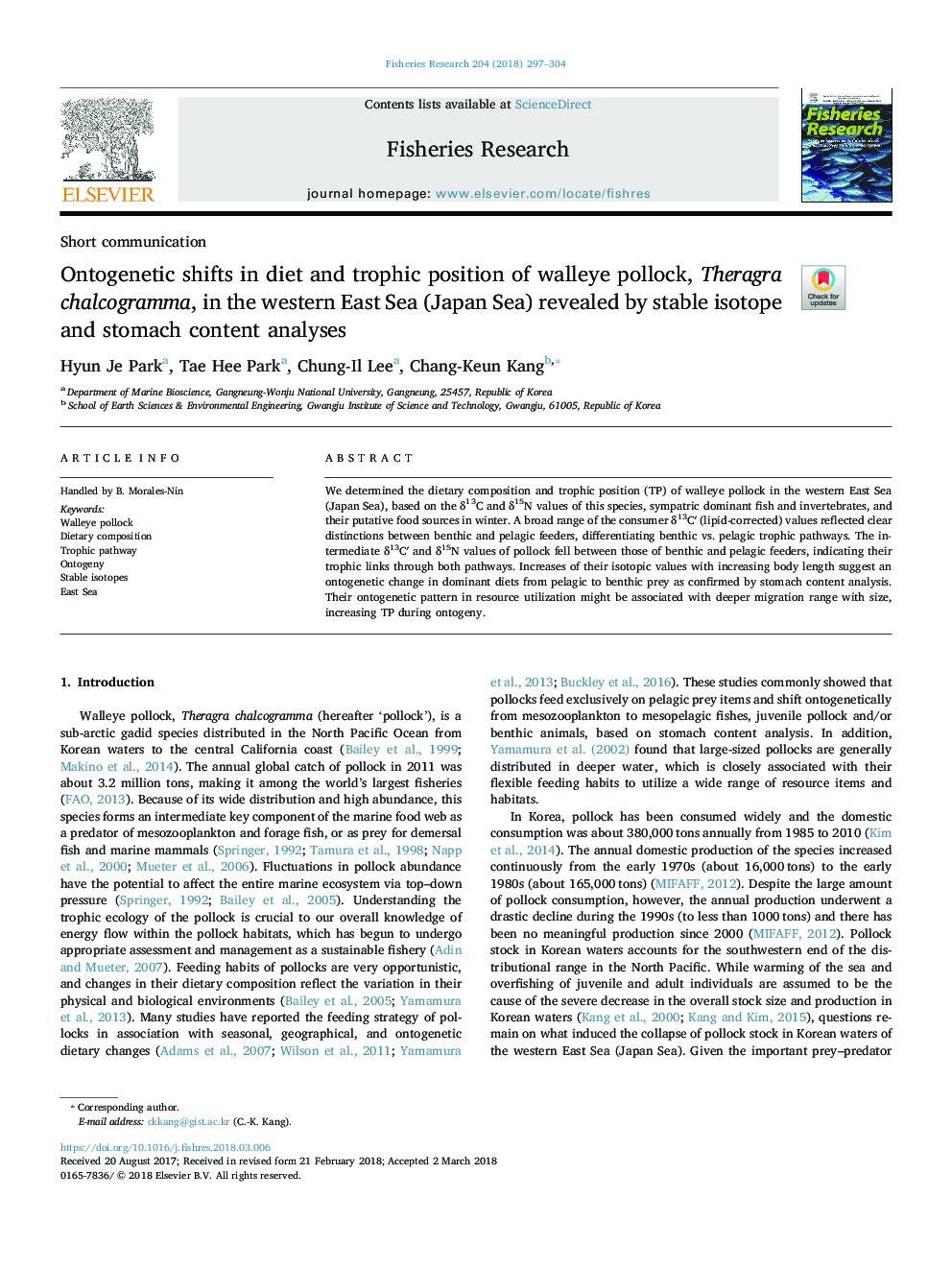| Article ID | Journal | Published Year | Pages | File Type |
|---|---|---|---|---|
| 8885407 | Fisheries Research | 2018 | 8 Pages |
Abstract
We determined the dietary composition and trophic position (TP) of walleye pollock in the western East Sea (Japan Sea), based on the δ13C and δ15N values of this species, sympatric dominant fish and invertebrates, and their putative food sources in winter. A broad range of the consumer δ13CⲠ(lipid-corrected) values reflected clear distinctions between benthic and pelagic feeders, differentiating benthic vs. pelagic trophic pathways. The intermediate δ13CⲠand δ15N values of pollock fell between those of benthic and pelagic feeders, indicating their trophic links through both pathways. Increases of their isotopic values with increasing body length suggest an ontogenetic change in dominant diets from pelagic to benthic prey as confirmed by stomach content analysis. Their ontogenetic pattern in resource utilization might be associated with deeper migration range with size, increasing TP during ontogeny.
Related Topics
Life Sciences
Agricultural and Biological Sciences
Aquatic Science
Authors
Hyun Je Park, Tae Hee Park, Chung-Il Lee, Chang-Keun Kang,
